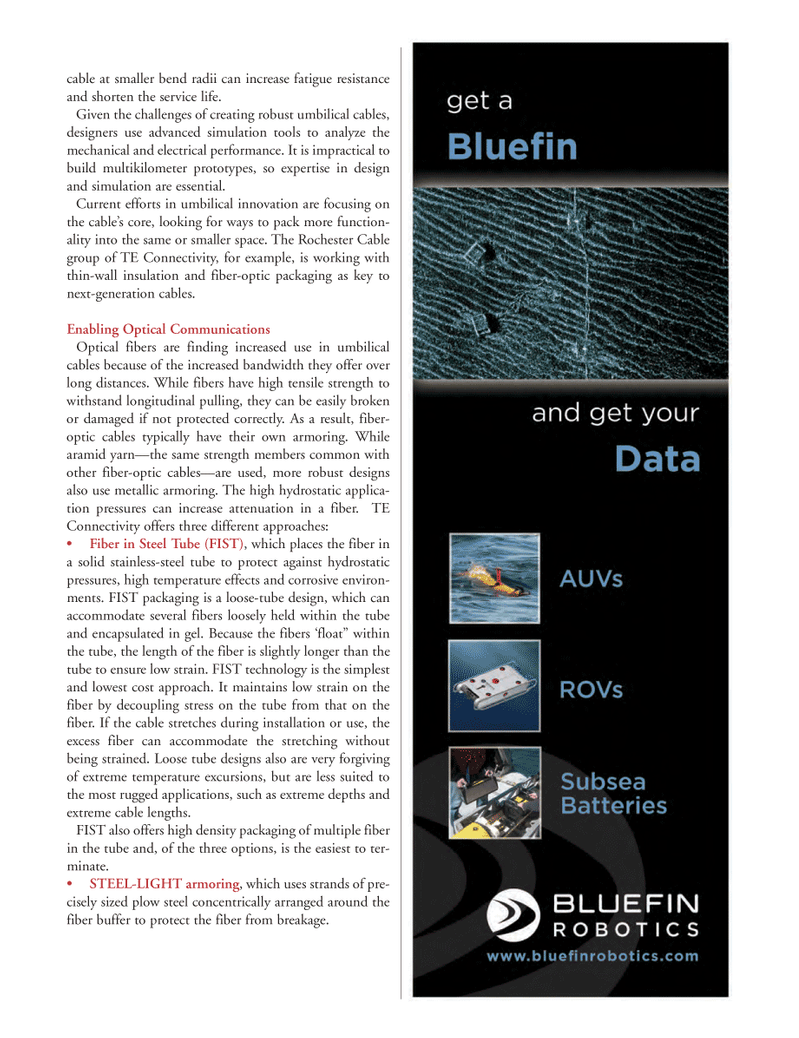
Page 33: of Marine Technology Magazine (May 2012)
Hydrographic Survey
Read this page in Pdf, Flash or Html5 edition of May 2012 Marine Technology Magazine
cable at smaller bend radii can increase fatigue resistance and shorten the service life. Given the challenges of creating robust umbilical cables, designers use advanced simulation tools to analyze the mechanical and electrical performance. It is impractical to build multikilometer prototypes, so expertise in design and simulation are essential. Current efforts in umbilical innovation are focusing on the cable?s core, looking for ways to pack more function- ality into the same or smaller space. The Rochester Cable group of TE Connectivity, for example, is working with thin-wall insulation and fiber-optic packaging as key tonext-generation cables.Enabling Optical Communications Optical fibers are finding increased use in umbilical cables because of the increased bandwidth they offer over long distances. While fibers have high tensile strength to withstand longitudinal pulling, they can be easily broken or damaged if not protected correctly. As a result, fiber- optic cables typically have their own armoring. While aramid yarn?the same strength members common with other fiber-optic cables?are used, more robust designs also use metallic armoring. The high hydrostatic applica- tion pressures can increase attenuation in a fiber. TE Connectivity offers three different approaches: Fiber in Steel Tube (FIST) , which places the fiber ina solid stainless-steel tube to protect against hydrostatic pressures, high temperature effects and corrosive environ- ments. FIST packaging is a loose-tube design, which canaccommodate several fibers loosely held within the tube and encapsulated in gel. Because the fibers ?float? within the tube, the length of the fiber is slightly longer than thetube to ensure low strain. FIST technology is the simplest and lowest cost approach. It maintains low strain on the fiber by decoupling stress on the tube from that on the fiber. If the cable stretches during installation or use, the excess fiber can accommodate the stretching without being strained. Loose tube designs also are very forgiving of extreme temperature excursions, but are less suited to the most rugged applications, such as extreme depths and extreme cable lengths. FIST also offers high density packaging of multiple fiberin the tube and, of the three options, is the easiest to ter- minate.STEEL-LIGHT armoring , which uses strands of pre- cisely sized plow steel concentrically arranged around the fiber buffer to protect the fiber from breakage. MTR#4 (18-33):MTR Layouts 4/27/2012 2:11 PM Page 33

 32
32

 34
34
